新概念英语第一册第45课Lesson45课文单词知识点
- 格式:doc
- 大小:96.50 KB
- 文档页数:1
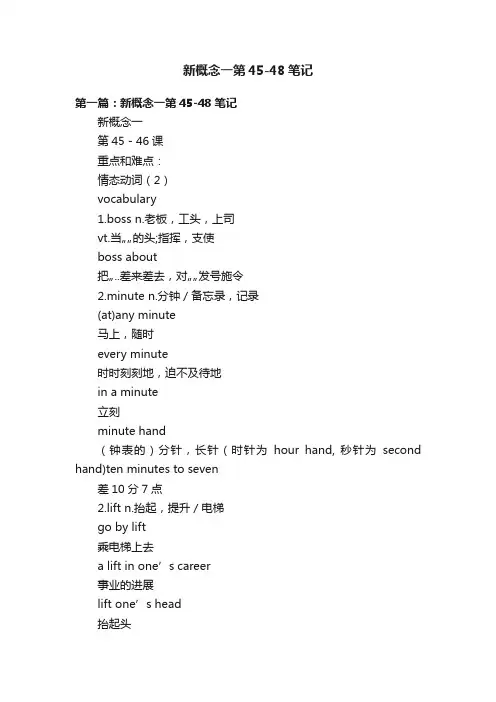
新概念一第45-48笔记第一篇:新概念一第45-48笔记新概念一第45-46课重点和难点:情态动词(2)vocabulary1.boss n.老板,工头,上司vt.当……的头;指挥,支使boss about把…..差来差去,对……发号施令2.minute n.分钟/备忘录,记录(at)any minute马上,随时every minute时时刻刻地,迫不及待地in a minute立刻minute hand(钟表的)分针,长针(时针为hour hand, 秒针为second hand)ten minutes to seven差10分7点2.lift n.抬起,提升/电梯go by lift乘电梯上去a lift in one’s career事业的进展lift one’s head抬起头lift up one’s ears竖起耳朵听4.cake n.蛋糕,糕饼或蛋糕a cake of soap一块肥皂a cake of mud一块泥土an ice cake冰块a potato cake土豆饼5.biscuit n.饼干/软烤小圆饼take the biscuit中头奖;出人意料的好(或坏)Key structures:1.Can you come here a minute please, Bob?请你过来一下好吗?PS: a minute 一会儿,不能译成“一分钟”,在句中作状语,相当于:Can you come here for a while please, Bob?2.She’s next door.她在隔壁。
Next door起副作用,作表语,意为隔壁。
3.The boss’s handwriting is terrible!Boss’s是名词所有格,主义其读音。
类似如:Tom’s shoes(汤姆的鞋),Xiao Wang’s company(小王的公司)。
Handwriting书写,是一个抽象名词,只能当作单数使用。
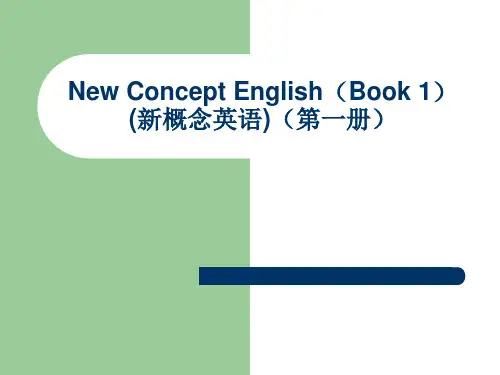
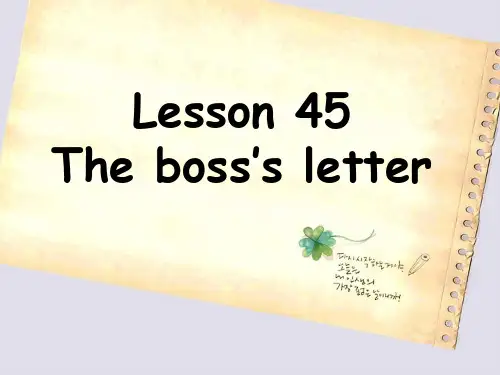
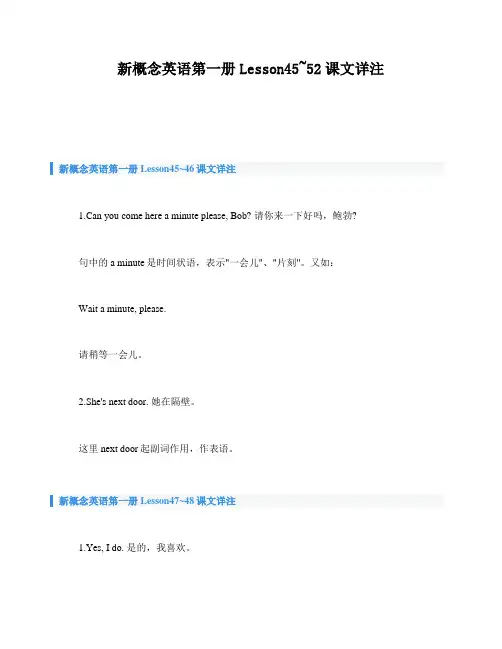
新概念英语第一册Lesson45~52课文详注新概念英语第一册Lesson45~46课文详注1.Can you come here a minute please, Bob? 请你来一下好吗,鲍勃?句中的 a minute是时间状语,表示"一会儿"、"片刻"。
又如:Wait a minute, please.请稍等一会儿。
2.She's next door. 她在隔壁。
这里 next door起副词作用,作表语。
新概念英语第一册Lesson47~48课文详注1.Yes, I do. 是的,我喜欢。
是一句肯定的简略回答。
如果是否定的回答,则应为No, I don't. I like…和 I don't like…这两个句型是分别表示"我喜欢/想要……"和"我不喜欢/想要……"的惯常用法。
2.black coffee, 不加牛奶或咖啡伴侣的清咖啡。
加牛奶的咖啡叫 white coffee. black在有些搭配中不译为黑色的,如:black tea 红茶3.序数词 1st~12th1st----first 2nd----second 3rd----third4th----fourth 5th----fifth 6th----sixth7th----seventh 8th----eighth 9th----ninth10th----tenth 11th----eleventh 12th----twelfth英语中序数词必须与定冠词(the)连用。
虽然有时不在形式上表现出来,在朗读的时候也必须加上the。
如:the 1st month (第1个月),the twelfth century(12世纪)。
新概念英语第一册Lesson49~50课文详注1.What about some steak? 来点牛排吗?句中What可以换成How,用来征求对方看法或意见。
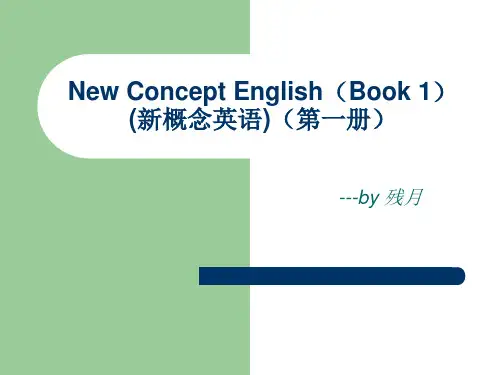
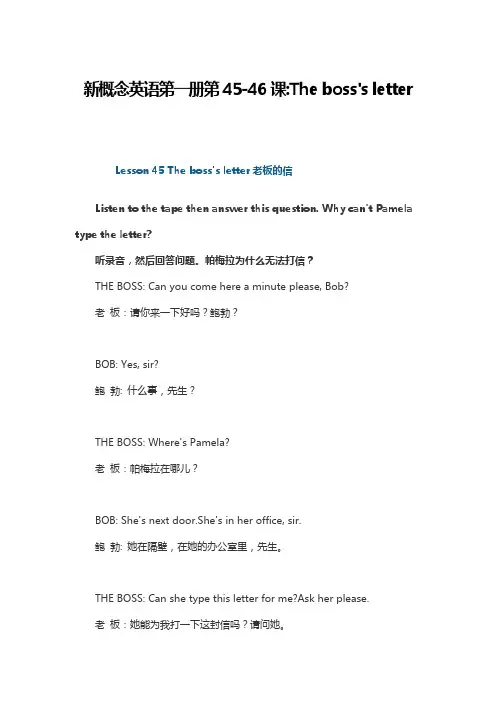
新概念英语第一册第45-46课:The boss's letterLesson 45 The boss's letter老板的信Listen to the tape then answer this question. Why can't Pamela type the letter?听录音,然后回答问题。
帕梅拉为什么无法打信?THE BOSS: Can you come here a minute please, Bob?老板:请你来一下好吗?鲍勃?BOB: Yes, sir?鲍勃: 什么事,先生?THE BOSS: Where's Pamela?老板:帕梅拉在哪儿?BOB: She's next door.She's in her office, sir.鲍勃: 她在隔壁,在她的办公室里,先生。
THE BOSS: Can she type this letter for me?Ask her please.老板:她能为我打一下这封信吗?请问她。
BOB: Yes, sir.鲍勃: 好的,先生。
BOB: Can you type this letter for the boss please, Pamela? 鲍勃: 请你把这封信给老板打一下可以吗,帕梅拉?PAMELA: Yes, of course I can.帕梅拉:可以,当然可以。
BOB: Here you are.鲍勃: 给你这信。
PAMELA: Thank you, Bob.帕梅拉:谢谢你,鲍勃。
PAMELA: Bob!帕梅拉:鲍勃!BOB: Yes?What's the matter.鲍勃: 怎么了?怎么回事?PAMELA: I can't type this letter.帕梅拉:我打不了这封信。
PAMELA: I can't read it!帕梅拉:我看不懂这封信,The boss's handwriting isterrible!老板的书写太糟糕了!New Word and expressions生词和短语canmodal verb 能够bossn. 老板,上司minuten. 分(钟)askv. 请求,要求handwritingn. 书写terribleadj. 糟糕的,可怕的Notes on the text课文注释1 Can you come here a minute please, Bob?句中的can是情态动词,表示“能力”。
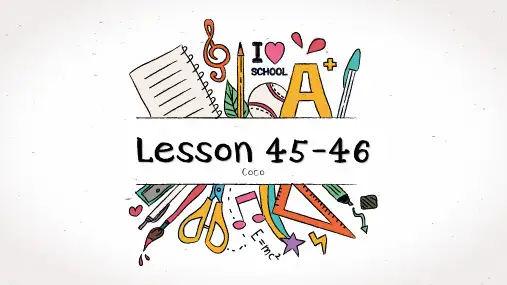
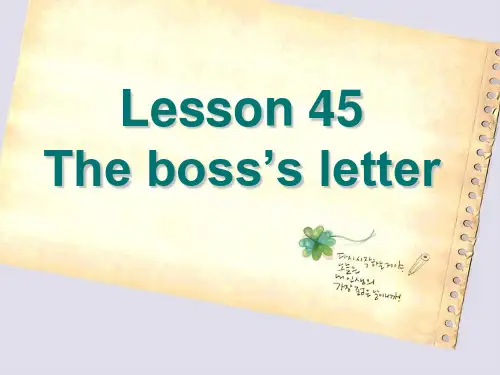
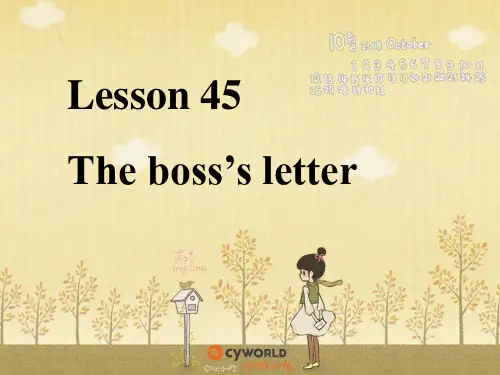
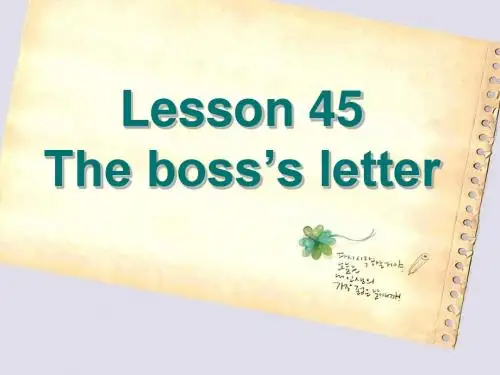
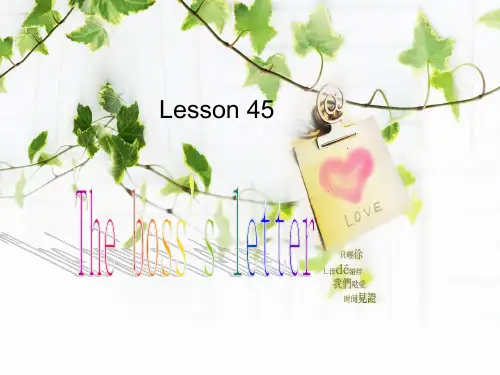
【知识点讲解】
今天我们来简单了解一下情态动词这个语法点。
英语中有一类动词,它们本身带有一定的词义,但是不可以单独作为谓语使用,要和其他动词的原型配合起来构成谓语。
这类动词就叫情态动词。
情态动词的数量很少,主要有:
can (could), may (might), must, need, ought to, dare (dared), shall (should), will (would) .
在这里,我们只学习第一个 Can.
can 可以表示主语的能力。
比如:I can play piano. 我能弹钢琴 / 我会弹钢琴。
也可以表示请求和许可,比如文中的 Can she type this letter for me? 询问的不是她会不会打字,而是她可不可以帮我打字?
大家也可以对比一开始我们讲的来观察这两个句子:can 不能单独使用,所以在第一个例句中它和play 连用:can play 来表示“我会弹钢琴。
”
情态动词的否定式由 情态动词+not 表示,所以“我不会弹钢琴”翻译为:I cannot/can't play piano. 疑问句形式把情态动词提前变为:Can you play piano?
Lesson45
THE BOSS: Can you come here a minute please, Bob?
BOB: Yes, sir?
THE BOSS: Where's Pamela?
BOB: She's next door. She's in her office, sir.
THE BOSS: Can she type this letter for me? Ask her please.
BOB: Yes, sir.
BOB: Can you type this letter for the boss please, Pamela?
PAMELA: Yes, of course I can.
BOB: Here you are.
PAMELA: Thank you, Bob.
PAMELA: Bob!
BOB: Yes? What's the matter.
PAMELA: I can't type this letter.
PAMELA: I can't read it! The boss's handwriting is terrible! 老 板:请你来一下好吗?鲍勃? 鲍 勃: 什么事,先生? 老 板:帕梅拉在哪儿? 鲍 勃: 她在隔壁,在她的办公室里,先生。
老 板:她能为我打一下这封信吗? 请问她。
鲍 勃: 好的,先生。
鲍 勃: 请你把这封信给老板打一下可以吗,帕梅拉? 帕梅拉:可以,当然可以。
鲍 勃: 给你这信。
帕梅拉:谢谢你,鲍勃。
帕梅拉:鲍勃! 鲍 勃: 怎么了?怎么回事? 帕梅拉:我打不了这封信。
帕梅拉:我看不懂这封信, 老板的书写太糟糕了!。